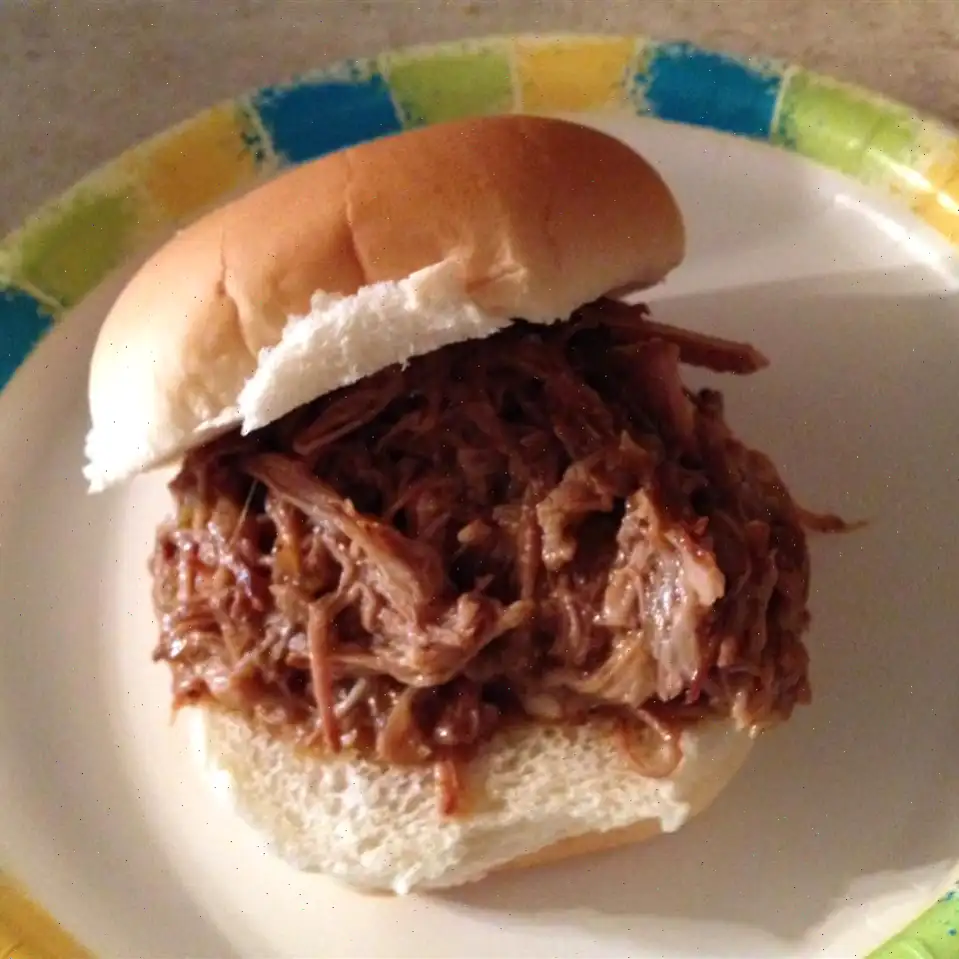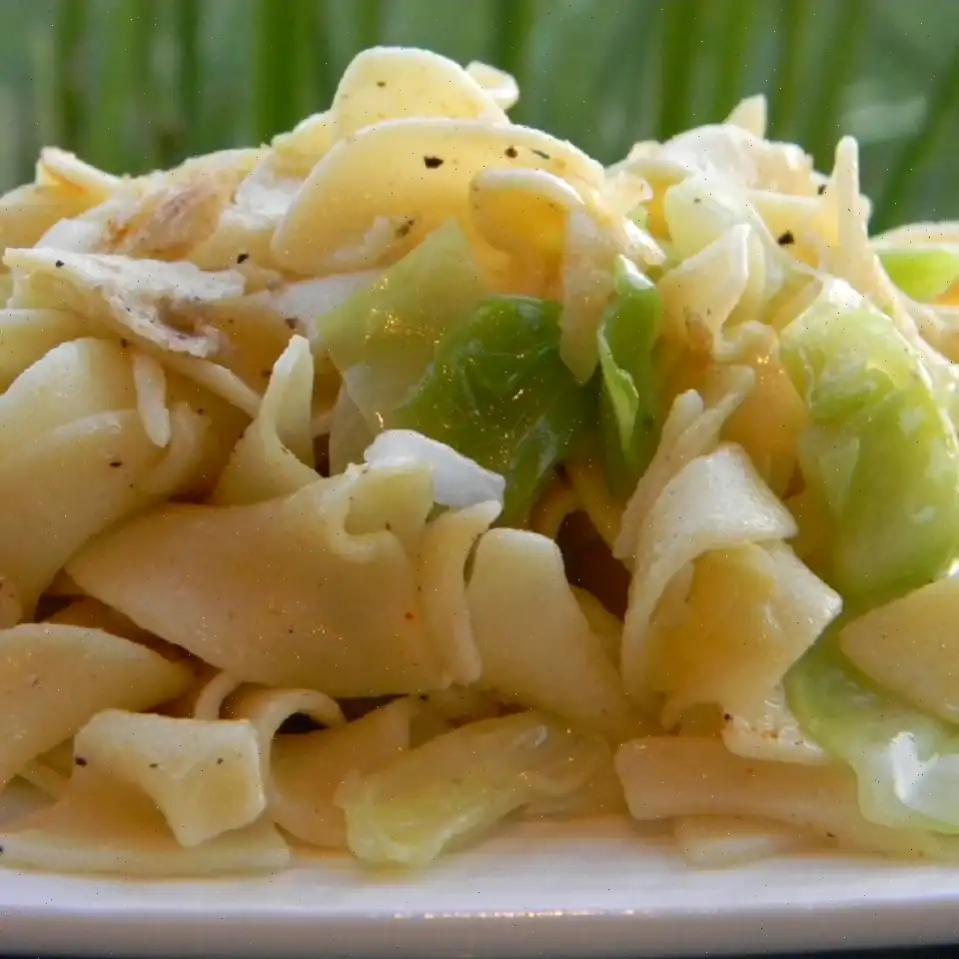
Schweinshaxe Recipe
Ingredients
This recipe was developed at its original yield. Ingredient amounts are automatically adjusted, but cooking times and steps remain unchanged. Note that not all recipes scale perfectly.
Original recipe (1X) yields 2 servings
- 1 carrot, diced
- 1 onion, peeled and diced
- 1 leek, chopped
- 1 stalk celery, diced
- 2 meaty pork knuckles
- 2 tablespoons vegetable shortening
- 1 teaspoon whole black peppercorns
- Salt to taste
- cup beer
- 1 pinch ground cumin, or to taste
Directions
Step 1: Place the carrot, onion, leek, celery, and pork knuckles into a large stockpot. Add the peppercorns and season with salt to taste.
Step 2: Pour enough water into the pot to cover the vegetables and meat. Cover and cook over medium heat for 2 to 3 hours, or until the ingredients are tender.
Step 3: Remove the pork knuckles from the pot and drain. Reserve the vegetables and cooking liquid for later use.
Step 4: Preheat the oven to 425F (220C). Melt the vegetable shortening in an enamel-coated cast iron baking dish or pan.
Step 5: Once the shortening has melted, add the drained pork knuckles, cooked vegetables, and about 2 cups of the cooking liquid into the pan.
Step 6: Bake the mixture in the preheated oven for 30 minutes.
Step 7: During the last 10 minutes of baking, pour in the beer that has been salted to taste. Lightly dust the dish with cumin to enhance the flavor.
Step 8: Serve the dish with potato or white bread dumplings, or a sauerkraut salad. In Bavaria, the cooking liquid and juices are strained and served as an accompanying sauce.
Nutrition Facts (per serving)
| Calories | 566 |
| Total Fat | 43g |
| Saturated Fat | 14g |
| Cholesterol | 95mg |
| Sodium | 131mg |
| Total Carbohydrate | 17g |
| Dietary Fiber | 3g |
| Total Sugars | 6g |
| Protein | 26g |
| Vitamin C | 13mg |
| Calcium | 77mg |
| Iron | 3mg |
| Potassium | 755mg |
* Percent Daily Values are based on a 2,000 calorie diet. Your daily values may be higher or lower depending on your calorie needs.
** Nutrient information is not available for all ingredients. Amount is based on available nutrient data.
(-) Information is not currently available for this nutrient. If you are following a medically restrictive diet, please consult your doctor or registered dietitian before preparing this recipe for personal consumption.

Origin and History
Schweinshaxe, or pig's knuckle, is a traditional Bavarian dish that has become an iconic part of German cuisine. The dish consists of a roasted or braised pork knuckle that is typically served with potato dumplings and sauerkraut. Its roots can be traced back to medieval Germany, where pork was a staple of the diet due to its accessibility and versatility. During this time, roasting and slow-cooking techniques were commonly used to tenderize tougher cuts of meat like the knuckle, making it a perfect dish for feasts and gatherings.
Regional Variations
While Schweinshaxe is widely known throughout Germany, it holds a special place in Bavarian cuisine. In Bavaria, Schweinshaxe is often grilled to achieve a crisp, golden skin, a method that contrasts with the braised preparation found in other regions. In fact, during Oktoberfest and other Bavarian festivals, grilled Schweinshaxe is a popular dish served alongside a refreshing beer. In southern Germany, particularly in areas like Munich, the dish is often paired with a dark lager like Mrzenbier or Doppelbock, which enhances the flavors of the rich, fatty meat.
Differences from Similar Dishes
Schweinshaxe may remind some of other pork-based dishes, like the Czech "vepo knedlo zelo" or the American "pork roast," but what sets it apart is the method of preparation and its iconic crispy skin. Unlike the American-style roast that is usually cooked in an oven or on a spit, Schweinshaxe is traditionally braised or slowly roasted in a broth to tenderize the meat before being finished with a crispy skin. The combination of tender meat and crunchy skin makes Schweinshaxe unique, and its pairing with regional accompaniments like dumplings and sauerkraut adds to its distinct Bavarian character.
Where It Is Typically Served
Schweinshaxe is a beloved dish that can be found in numerous Bavarian beer gardens and restaurants, especially in the region around Munich. It's a common sight at Oktoberfest, where it is often served with freshly brewed beer and enjoyed by locals and tourists alike. Beyond Germany, the dish is also popular in parts of Austria, Switzerland, and the Czech Republic, where it has been embraced and adapted to local tastes. In these regions, Schweinshaxe may be prepared with slight variations, but the fundamental elements remain the same: tender, flavorful pork and crispy skin.
Fun Facts about Schweinshaxe
- The term "Schweinshaxe" translates to "pig's hock" or "pork knuckle," referring to the cut of meat used in the dish.
- In Germany, Schweinshaxe is often enjoyed during festive events and gatherings, where it is typically served alongside a side of mashed potatoes or dumplings.
- Schweinshaxe is one of the dishes that perfectly embodies Bavarian "Gemtlichkeit" a feeling of warmth, coziness, and good company, often paired with hearty beer.
- During Oktoberfest, the roasted version of Schweinshaxe is a festival favorite, with many festival-goers enjoying it at long wooden tables under the open sky.
Conclusion
Schweinshaxe is more than just a meal; its a symbol of Bavarian culture and culinary tradition. Whether enjoyed at a lively beer garden or prepared at home, this hearty dish offers a unique blend of tender meat and crispy skin that has been enjoyed for centuries. Its enduring popularity at German festivals like Oktoberfest speaks to its universal appeal, and its rich flavors continue to bring people together in celebration.
FAQ about Schweinshaxe Recipe
Comments
Eric Cruz
11/07/2023 11:13:20 AM
Great recipe, but I suggest enhancing its authenticity by grilling the Hax'n instead of braising it. In Bavaria at Oktoberfest and most traditional restaurants, you'll typically find gegrillte Schweinshax'n on the menu. Grilling the hocks is crucial for achieving that crispy skin, similar to pork rinds. It's important to ensure they are fresh, not smoked or cured. I also recommend serving it with a good Märzenbier or Doppelbock instead of white wine, as it's more in line with the Bavarian tradition. Accompany the dish with Semmelknödel and some Blaukraut for a truly authentic Bavarian meal. Prost! Brad
Victoria Baker
08/07/2024 12:49:14 AM
I tried this recipe for the first time tonight and it was fantastic! I didn't have leeks on hand, but it didn't affect the overall taste. The meat turned out a bit dry, but I managed to salvage it by straining the extra liquid and reducing it for about 15 minutes. This reduction made an excellent dipping sauce. I paired the dish with oven-roasted Klondike potatoes and onions, and it was delicious!








